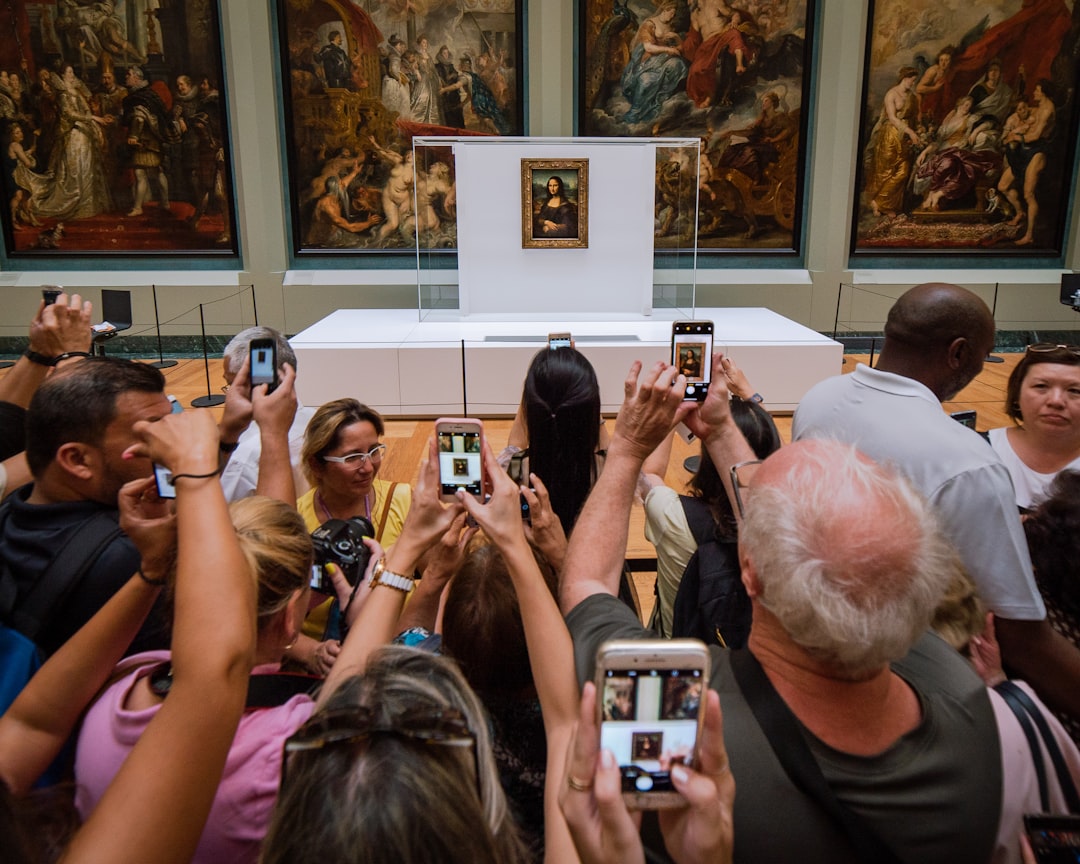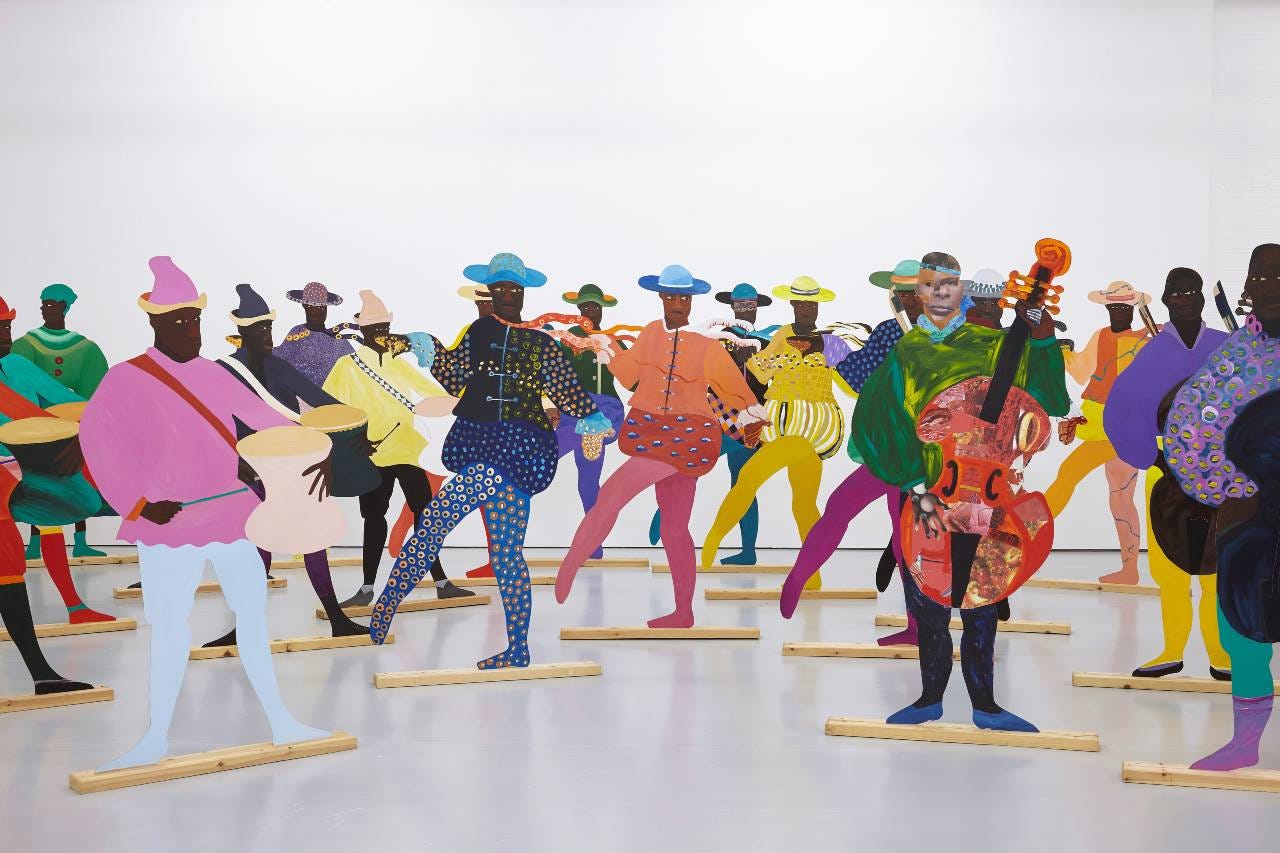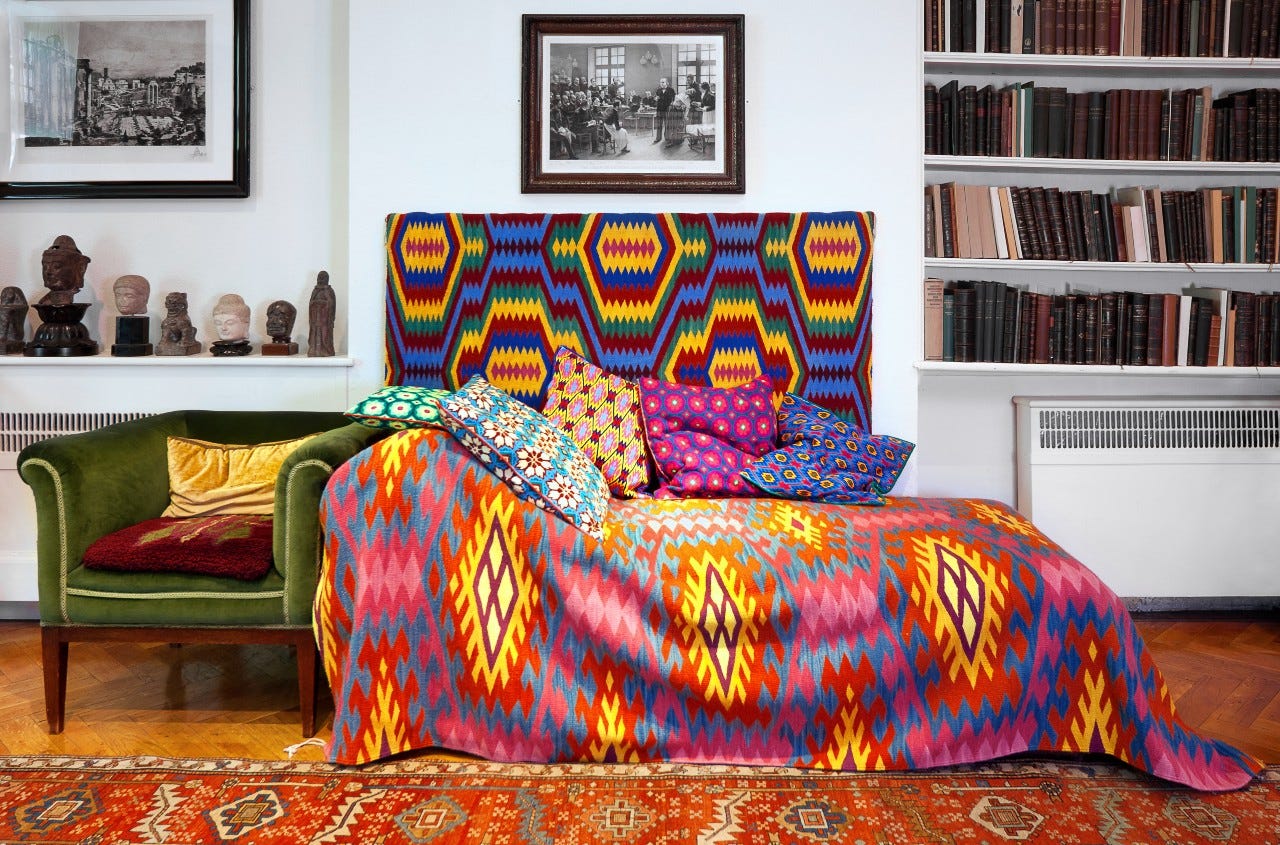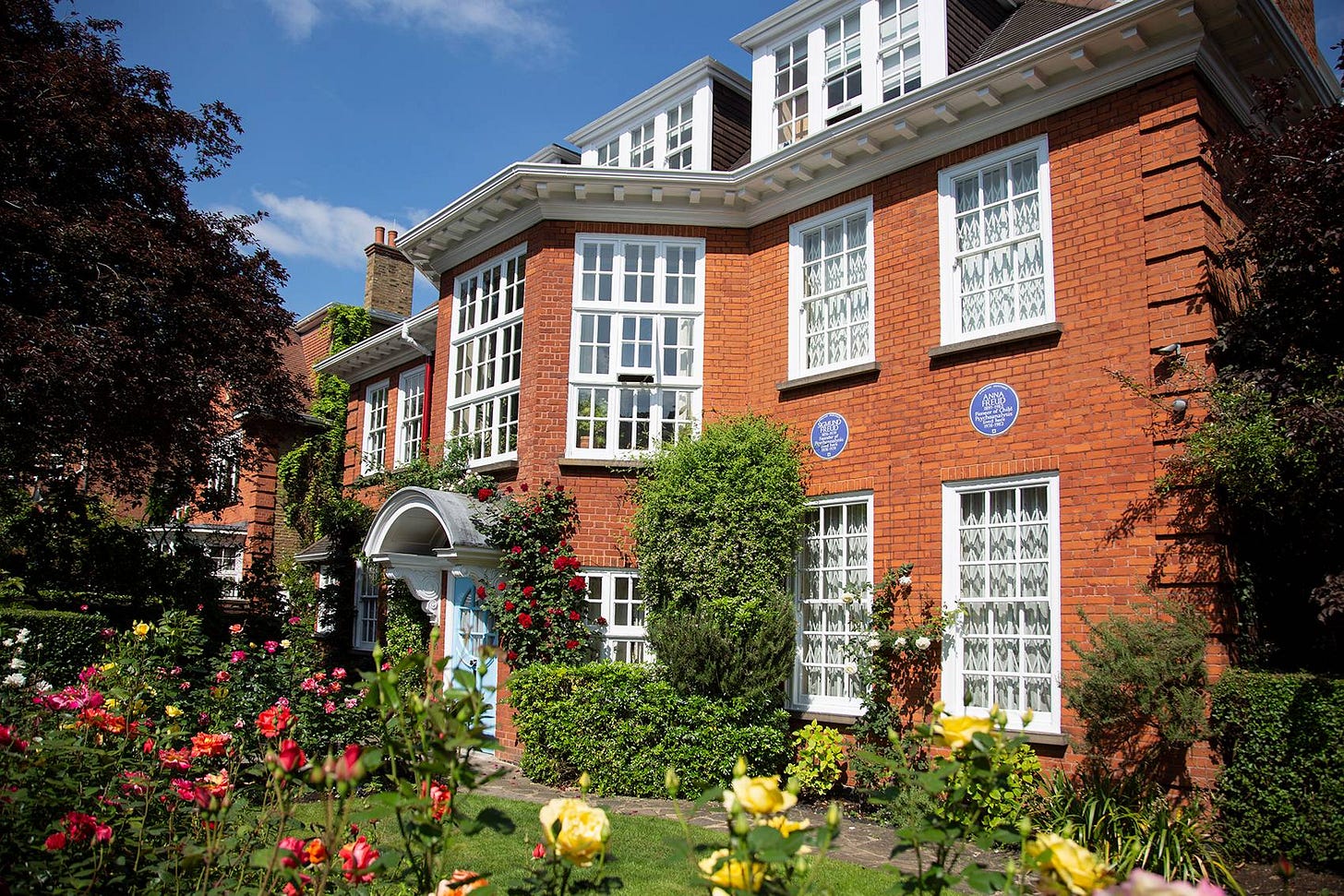Time to ban phones in museums?
PLUS: the must-see exhibitions of 2024 as recommended by experts
Hello.
I’m landing in your inbox on a Wednesday which means it’s a ‘views and interviews’ edition! (The Friday news round-up is back on Friday obvs.)
We’re kicking off the new year discussing one of the most universal aspects of any museum or gallery visit in the 21st century: the ubiquity of the mobile (camera) phone. For some, getting some shots to share is a vital part of the experience. For others, they are a nuisance which literally get in the way of everyone’s enjoyment. Journalist Lucy Thackray is very much in the latter camp, and so argues in my new opinion column the 250 Take that it’s time for museums to take action.
My first Hot List of the year is also a special edition looking ahead to the best exhibitions coming up in 2024. I’ve asked six leading art and culture figures to tell you what’s top of their ‘to visit’ list over the next 12 months.
Finally, my Big Interview this week is all about a landmark new exhibition looking at the fascinating connections between Sigmund Freud and Latin America. To mark its opening at the Freud Museum today, I chat to the curator Jamie Ruers about lockdown, language barriers and Latin America’s love of psychoanalysis.
Let’s dive in!
— maxwell
The 250 Take
This week in my opinion column from guest writers, journalist Lucy Thackray argues — in 250 words — that camera phones have ruined the gallery-going experience.
💬 Museums: it’s time to ban phones
“On a recent New York trip, I slipped out of central Manhattan into MoMA, in search of some peace and connection with the art. Instead of cultural heaven, I found myself in social media hell ‒ ducking and diving to avoid visitors zooming in, filming video or taking selfies with the works. It now seems most of us are experiencing MoMA through a six-inch screen. It felt dystopian: was no one here to simply look and feel, without a proof-of-attendance photo?

I’d forked out $30 for entry, but the visit quickly felt cheapened. In one interactive installation, retro phones can be picked up to hear poetry recited. But hardly anyone was participating ‒ they were too busy snapping the view from the sidelines. Firstly, I’m baffled by the impulse to capture your individual view of a painting ‒ hardly original content when the same angle is found in seconds on Google images. Secondly, isn't our collective phone obsession putting a barrier between us and the transformative nature of art? My instinct is that it needs to be taken out of our hands: literally and metaphorically.
Perhaps museums could offer discounts to those who conceal devices in a sealed bag, as they do at Secret Cinema, or leave them in lockers. After all, people expect to switch off for other mediums, such as theatre. Another move might be banning photography, but providing official, social-ready pictures to visitors after a visit, with encouragement to share. Museums: the ball is in your court.”
— Lucy Thackray has written for The Sunday Times and The Independent amongst many others, and has been a full-time travel editor and writer for 15 years. She regularly visits the world’s top culture cities on assignment.
The Hot List
The first edition of my Hot List this year sees six leading cultural figures recommend the exhibitions they’re most looking forward to in 2024.
***
🏛️ The Time is Always Now: Artists Reframe the Black Figure at the National Portrait Gallery, London
Recommended by Dr Nicholas Cullinan, Director of the National Portrait Gallery
“The NPG has a stellar line up of exhibitions programmed for 2024, including The Time Is Always Now, an extremely important exhibition that will see 22 artists come together in celebration of Black figuration. The exhibition’s title refers to a 1956 essay by American author, James Baldwin.
“What excites me is how apt that title really is, as February 2024 will not only see the opening of our show, but also Entangled Pasts at the Royal Academy and Soulscapes at Dulwich Picture Gallery. All three exhibitions will work in harmony to highlight the perspectives and works of African diasporic artists”
🏛️ Arte Povera at Bourse de Commerce — Pinault Collection, Paris
Recommended by Gareth Harris, Chief Contributing Editor at the Art Newspaper and author of Censored Art Today
“Arte Povera continues to fascinate — who doesn’t find ‘impoverished art’ compelling? — which is why I’ll be popping over to the Bourse de Commerce in October for the launch of curator Carolyn Christov-Bakargiev’s take on the hugely influential movement that originated in Italy in the 1960s.
“The show will include numerous loans from one of the best Arte Povera collections in the world (Castello di Rivoli in Turin), charting the rise of artists who turned branches, rocks and soil into something wondrous. Humble materials in art still appeal, especially in a world as tumultuous as ours.”
🏛️ Frans Hals at the Rijksmuseum, Amsterdam
Recommended by His Excellency Mr Karel J G Van Oosterom, Ambassador for the Kingdom of the Netherlands to the United Kingdom
“Last September I had the pleasure of opening the Frans Hals exhibition at the National Gallery in London. Frans Hals is a 17th century Dutch painter from Haarlem, famous for his relaxed style of portraiture that shows rather lively (and often even smiling) figures.
“In 2024, almost all the works of this exhibition — plus more Frans Hals painting that are not on show at the National Gallery! — will be showcased in the Rijksmuseum in Amsterdam. I look forward to seeing this excellent collection of Hals’ works in my home country.
“Can I mention another one? The National Gallery in London has a major Van Gogh exhibition scheduled for 2024!”

🏛️ Entangled Pasts, 1768–now: Art, Colonialism and Change at the Royal Academy, London
Recommended by Geraldine Collinge, Chief Executive Officer of Compton Verney
“There are many exhibitions I am looking forward to next year from what looks like a bumper year. I’m enjoying the Royal Academy programme and their Entangled Pasts, 1768–now show looks like it will be a fascinating exhibition. But there are also a number of great anniversary celebrations: the National Gallery is 200, Ikon is 60 and of course it’s our own 20th birthday.
“I love the simplicity of the National Treasures programme by the National Gallery for their bicentenary — what a great way for the nation to celebrate art and I look forward to seeing how each gallery celebrates its extraordinary loan, including at Ikon in Birmingham.”
— Compton Verney’s 20 year anniversary programming begins in March. Read more
🏛️ When Forms Come Alive at the Hayward Gallery, London
Recommended by Nick Hornby, artist
“I think this is going to be a fantastic sculptural show. We are in a moment of multiple crises (war, environment, identity, AI) with such strong narratives that it’s hard to find space for more abstracted and ambiguous sculptural propositions. My hunch is that this show will do just that — and very well. I’m looking forward to seeing works by Holly Hendry and Marguerite Humeau alongside Phyllida Barlow and Franz West. Judging by the list of artists I think it will be quite open and abstracted (a welcome relief to the didacticism of some heavy handed curated shows).
“Of the blockbusters, Van Gogh at the National Gallery will be nice if you can avoid the crowds, but Yoko Ono at Tate Modern I can miss. I think NAOMI (Naomi Campbell's 40-year career as a trailblazing British fashion model and icon) will be fairly surreal at the V&A.”
— Nick’s three new public art commissions can be seen in London’s Westminster and Kensington now. Discover more
🏛️ Do Ho Suh | Tracing Time at Modern, National Galleries of Scotland, Edinburgh
Recommended by Helen Smout, Chief Executive of Culture Perth and Kinross
“In 2024, I am looking forward to South Korean-born artist Do Ho Suh’s first ever solo exhibition in Scotland. The focus of the exhibition is on the artist’s works on (and with) paper. So often works on paper are overlooked and yet they can present the most beautiful, inventive and often intimate artist voice which I find fascinating and always engaging.”
— The major new Perth Museum opens at Easter. Find out more
The Big Interview
Here’s a great pub quiz question: Which city has the highest proportion of psychoanalysts in the world?
No it’s not London. No, nor Vienna. This could take some time….it’s Buenos Aires.
The obvious next question is why? Well, all is answered in a brand new exhibition at London’s Freud Museum.
Freud and Latin America explores the reasons why the father of psychoanalysis’ ideas were so warmly welcomed in the Argentinian capital and its neighbouring countries — and why they remain so enduringly influential on the culture and society of the region.
The show — which opens today — is the first time the Freud Museum has explored the phenomenal impact of Sigmund Freud in Latin America. Which is surprising, because while Freudian psychoanalysis is often considered a European practice — begun at his home in Vienna before being adopted in Berlin, Budapest, London and Paris — its impact in Latin America has arguably been the most dramatic.
If you don’t know the Freud Museum, then this is a good time to change that. It was the final home of Sigmund Freud and his daughter Anna Freud, a pioneering child psychoanalyst. The Freud family came to England as refugees, having escaped Austria following the Nazi annexation in March 1938. The heart of the house is Sigmund Freud’s study and his famous psychoanalytic couch, and it’s been open as a preserved museum in leafy Hampstead since 1986.
So to mark the opening of the new exhibition, here I chat to the curator Jamie Ruers to find out more on this landmark new show.
***
Hello Jamie. So let’s start with why does Buenos Aires have the highest proportion of psychoanalysts in the world?
It's hard to point to just one reason as to why, but it can be traced back to a wider cultural reception of psychoanalysis that began in the early part of the twentieth-century across the region. This exhibition will begin to highlight some of the key individuals and methods of disseminating psychoanalytic ideas in this part of the world.
What are some of the highlight objects that visitors will see in the new show?
On display will be a wide range of objects including photographs, artworks, magazines, a comic book, personal letters, and books and marginalia — all amounting to over fifty pieces on display. Some of the most striking pieces are photomontages by German-Argentine artist, Grete Stern, who produced these pieces for a women's magazine in Argentina titled Idilio between 1948 - 1951. They were featured in a regular article titled 'Psychoanalysis will help you' where women would write in their dreams which would be analysed by a psychoanalyst, pseudonymously named 'Richard Rest'. We will have four examples of the magazines on display too, so visitors can see how the artworks were used in the periodicals.
Another highlight are two prints - both titled 'The Psychoanalyst' (2020) — by contemporary Brazilian poet and woodblock artist, Jose Borges. He is popular in Brazil and is known to be a favourite of Brazilian President Lula. His works stand out from the rest of the show. The exhibition is mostly focused on historical relationships between Freud and Latin America, but Borges' pieces demonstrate how integrated psychoanalysis has become in Brazil that the psychoanalytic session is being represented by traditional Brazilian woodblock printing methods.
How did the idea for the exhibition come about?
It came about in the midst of the pandemic when the Freud Museum was running lots of online events. It gave us an opportunity to meet so many new people from across the world, including colleagues in Latin America. Suddenly, geographical boundaries and time differences were far less of an issue. I met Mariano Ruperthuz (based in Chile), one of the exhibition's lead researchers, in 2020 for an experimental event we did together titled the History of Psychoanalysis in Latin America. It was held in both English and Spanish.
He later told me about his book written with Mariano Plotkin (based in Argentina) about Freud's correspondence and relationships with admirers throughout the region. I realised how rich and all-encompassing this subject was. There were magazines, artworks, personalised letters, and books with dedications (many of which are in our collection at the Freud Museum London!). From this, an exhibition began to emerge!
What are some of the challenges of putting on an exhibition like this?
There have been practical challenges since the start, such as language barriers. My Spanish is OK, but I find Portuguese difficult. I have many wonderful Brazilian colleagues so fortunately they've been an incredible help throughout the process but it does make things inefficient. Not only that, but a lot of the archive material is in German or even French. Secondly, my research colleagues based in Latin America — Mariano Ruperthuz and Mariano Plotkin — are in different time-zones, even different seasons to us, so our availability to get content to one another has felt disjointed at times.
However, our collective enthusiasm has not let any of this get in the way. It's been so inspiring to work with such knowledgeable and delightful academics that share such a passion for Freud. They both have decades and decades of experience publishing, teaching, lecturing on Freud's impact in the region. I saw my role as selecting the best narrative to deliver this message to our audience, whom I know like the back of my hand.
The final challenge was the type of content we wanted to use, specifically the magazines and audio recordings from the 1940s. Sourcing this material has not been easy. Once we found magazines collectors, there was the additional obstacle of transportation as they were all based in Argentina or Brazil. Due to the fragility of the material and the cost for safe transport, we decided to accept high-resolution images and produce good quality facsimiles in-house. While my priority is to showcase this amazing ephemera, it didn't feel right to risk the objects in transit.
You're also coming to the end of a long stint as Events Manager at the Freud Museum. What did that role involve?
I've worked at the Freud Museum for 10 years. I started as a volunteer and was lucky enough to work in most of the departments, until 2017 when I began programming events. The Freud Museum was well-known for its events before I arrived, from hosting Edward Said's famous lecture Freud and the Non-European in 2001 to offering a regular stage for major figures like Cornelia Parker, Adam Phillips, Julia Kristeva and Slavoj Zizek.
What I loved most about programming events her was how Freudian theory could be applied to so many things: art, film, literature, politics, society more widely, as well as the clinical practice of psychoanalysis. Often, I was tasked to build programmes that complemented the temporary exhibitions, but this was always supported by a general programme showcasing the latest research in psychoanalysis or discussions about contemporary issues.
There's a limit, however, working within a historic house, as the capacity isn't big. Therefore, the pandemic really opened doors for us to be reaching people who couldn't get to a residential street in Hampstead very easily. Recordings of events for those who can't attend, livestreamed courses from the Museum, and a greater quantity of events more generally was possible in the digital sphere in ways that they weren't/aren't in the physical building.
Some of my highlights have been a David Lynch conference Freud/Lynch: Behind the Curtain in 2018 which became a book. This was followed by the 'Twin Peaks Day book launch' in February 2023 where we transformed the house into different sites from Twin Peaks, with a quiz trail, food, drink, and a series of short talks throughout the evening. It was such a joyous event! This summer, we hosted five film nights in the tranquil garden of Freud's home, showing mostly horror films, preceded by a lecture. The lectures were given by the wonderful Mary Wild who introduced psychoanalytic film interpretations before the screenings began. It was really wholesome series and it brought in the largest proportion of new audiences that we'd seen in long time. These were my final events for the Freud Museum, as I will now be leaving my post and moving to the Foundling Museum to work on events there.
Finally, what other subjects in Freud's life and influence do you think warrant exploring in an exhibition?
That's an amazing question. I think there are some really key centenary celebrations coming up, such as Civilisation and its Discontents (1929) which really feels like it resonates with the current world that we live in. I also think that Freudian approaches to ecology and climate change would be an amazing subject for an interdisciplinary exhibition. Particularly as 'climate anxiety' has become a common term, it would lend itself to some fascinating viewpoints.
Finally, I think there are huge swathes of Freud's library that is massively under-explored. It's not so easy to put all these books out at once, but since I've been working with so many books over the past couple of years, I realise how much of his own personality they hold. For example, with the little pencil markings, the dedications from his followers, the marginalia, but also the variety of books he chose to bring with him as refugee, from John Milton to Nietzsche to Stefan Zweig, Freud has such a rich library, I hope that more can be discovered in the years to come.
— Freud and Latin America opens at the Freud Museum in London from today until 14 July.
Enjoyed this newsletter? Donate now to support me and my publication as I continue to bring you insights from the world of museums, galleries, art and heritage in 2024





Such an interesting article. I went to see Frans Hals at the National Gallery, London recently and it was really noticeable that there were fewer phones out, up and clicking away than is standard nowadays. It was nice to be free of the perils of phone usage in galleries for a change, (not used as an unofficial tripod and not having phones stuck in my face or by my head!) Refreshing.
I'd like to see the introduction of phone free timeslots where people knowingly book in to not using phones, gadgets etc. It's not just phone usage, but what is it all for? What are we all going to do with our streams of photos, video etc. ultimately? I get the idea of a memory or souvenir or an object to share with others; however we're all collecting so much data to what purpose?
On phones, I could easily be argued either way. Half of me thinks, that phones are an unavoidable part of modern life.
But also, they're shit, annoying, and maybe as an artefact of consumerism that were specifically designed for addiction people don't actually want to spend as much time on them as they do (increasingly, research would support this view https://docs.cdn.yougov.com/qdufq401x0/Internal_PhoneUsage_230327.pdf and https://swnsdigital.com/us/2021/08/over-60-of-people-want-to-spend-more-time-doing-non-technology-activities-at-the-end-of-the-day/).
In this second context, certain spaces being specifically phone-free is actually helping people get to where they want to be by forcing them to break habits that would otherwise remain unaddressed.
There's maybe then a whole conversation to be had about nanny-ism...
Anyway, these thoughts are all fairly half formed. It's a good conversation to be having